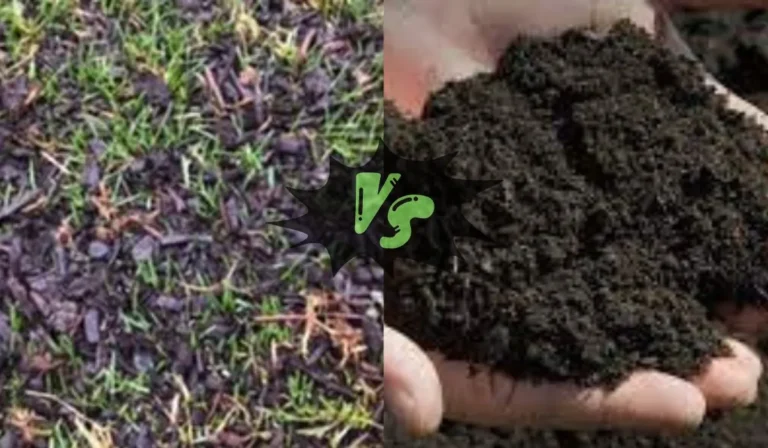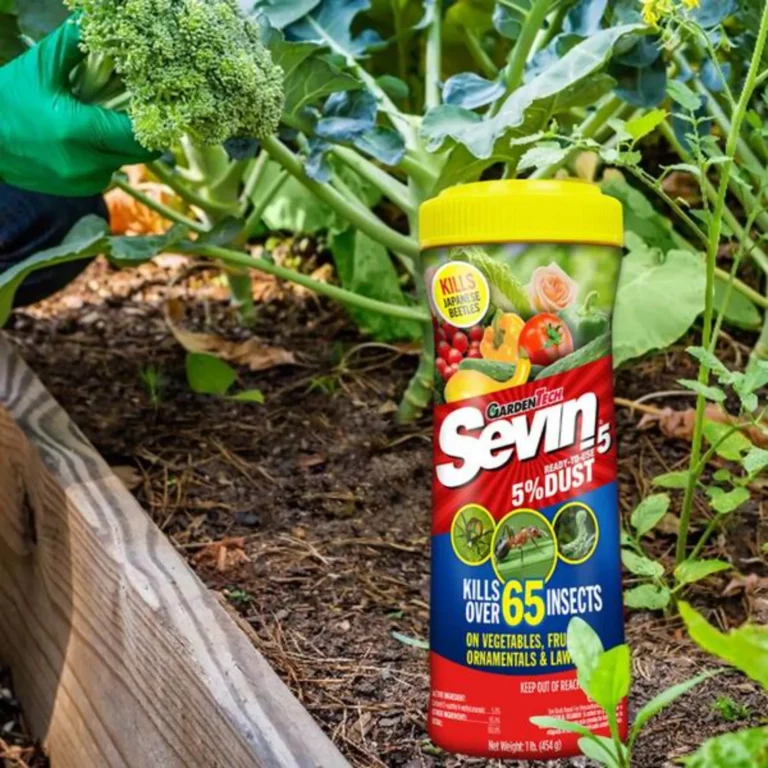Have You Heard of the ‘Fungicide Overdose’ Trend? Discover Its Impact on Grass
Are you worried about using too much fungicide and killing your grass? Fungicides are a common tool for preventing and treating fungal diseases in lawns. However, overusing fungicides can be harmful to your grass and the environment. In this article, we will explore the effects of overusing fungicides, proper usage of fungicides, and how to prevent fungicide overuse.
Will too much fungicide kill grass? Yes, excessive use of fungicides can harm your grass. Fungicides are designed to kill fungal pathogens that attack plants, but excessive use can also harm the grass.
When you use too much fungicide, it can build up in the soil and cause damage to the roots of your grass. Additionally, overuse of fungicides can lead to the development of resistance in the fungus, rendering the fungicide ineffective.

Will Too Much Fungicide Kill Grass?
As a lawn enthusiast, you want to keep your grass healthy and green. One of the challenges you may face is fungal diseases that can damage or kill your grass. Fungicides can be a powerful tool to control these diseases, but can too much fungicide harm your grass? Let’s find out.
Firstly, it’s important to understand that fungicides are designed to kill fungal pathogens that attack plants. However, excessive use of fungicides can harm the grass. According to My Heart Lives Here, too much fungicide can kill grass.
When you apply too much fungicide, it can cause damage to the grass, including yellowing, thinning, and even death. Fungicides can also affect the growth of the grass. For example, group 3 fungicides like Propiconazole and Triticonazole are growth regulators. Applying them at higher doses can lead to more growth regulation, which can be harmful to the grass, especially when used in conjunction with other growth regulators like Primo, as mentioned in The Lawn Forum.
It’s important to follow the instructions on the fungicide label carefully. Over-application of fungicides can lead to more harm than good. Even if you’re dealing with a severe fungal disease, you shouldn’t apply more fungicide than recommended.
Another factor to consider is the type of fungicide you’re using. Different fungicides have different modes of action and can affect the grass differently. For example, according to TruGreen, some fungicides can cause slimy brown or white patches throughout the lawn, while others can just kill the grass.
Effects of Overusing Fungicides
Fungicides are an essential tool for controlling fungal diseases in turfgrass. However, excessive use of fungicides can harm the grass.
In this section, we will discuss the immediate and long-term impact of overusing fungicides on grass.
Immediate Impact on Grass
Excessive use of fungicides can cause immediate damage to the grass. The grass may turn yellow or brown, and the leaves may wilt or curl.
This is because fungicides are designed to kill fungal pathogens that attack plants, but excessive use can also harm the grass. Fungicides can also cause burning or scorching of the grass if applied during hot and dry weather.
Table 1: Immediate Impact of Overusing Fungicides on Grass
| Impact | Symptoms |
|---|---|
| Yellowing | Grass turns yellow |
| Browning | Grass turns brown |
| Wilting | Leaves wilt or curl |
| Burning/Scorching | Grass burns or scorches |
Long-term Consequences
Overuse of fungicides can also have long-term consequences on grass. Fungicides can kill beneficial microorganisms in the soil that help the grass grow. This can lead to a decrease in soil fertility and an increase in soil compaction. Over time, this can cause the grass to become weak and susceptible to disease.
In addition, fungicides can harm the environment. Fungicides can reach aquatic ecosystems and occur in surface water bodies in agricultural catchments throughout the entire growing season due to their frequent, prophylactic application. This can lead to contamination of water sources and harm aquatic life.
Table 2: Long-term Consequences of Overusing Fungicides on Grass
| Consequence | Symptoms |
|---|---|
| Decrease in soil fertility | Grass becomes weak and susceptible to disease |
| Increase in soil compaction | Grass roots become shallow and weak |
| Harm to environment | Contamination of water sources and harm to aquatic life |
Proper Usage of Fungicides
Fungicides are an effective way to control and prevent fungal diseases in your lawn or garden. However, using too much fungicide can be harmful to your grass. Here are some tips on how to properly use fungicides to ensure your grass stays healthy.
Choosing the Right Fungicide
Before applying fungicide, it’s important to identify the type of fungus affecting your grass. Different fungicides are designed to target specific types of fungi. Using the wrong fungicide can be ineffective and a waste of money.
Here are some common types of fungicides and the fungi they target:
| Fungicide Type | Targeted Fungi |
|---|---|
| Chlorothalonil | Dollar spot, brown patch, anthracnose, and more |
| Propiconazole | Rust, powdery mildew, and more |
| Thiophanate-methyl | Fusarium patch, snow mold, and more |
Always read the label and instructions carefully before purchasing and applying fungicide. The label will provide information on the targeted fungi, application rates, and safety precautions.
Application Techniques
Proper application is key to using fungicides effectively and avoiding harm to your grass. Here are some tips on how to apply fungicide:
- Apply fungicide when the grass is dry and rain is not expected for at least 24 hours. This will allow the fungicide to properly adhere to the grass blades.
- Use a spreader or sprayer to apply fungicide evenly. Avoid applying too much in one area, as this can lead to over-application and harm to the grass.
- Follow the recommended application rate on the label. Using too much fungicide can be ineffective and harmful to the grass.
- Water the grass after applying fungicide to help it absorb into the soil and reach the roots.
Remember, fungicides are a tool to control and prevent fungal diseases in your grass. Using them properly and in moderation can help keep your lawn healthy and green.
Preventing Fungicide Overuse
If you’re dealing with a fungal disease in your lawn, it’s understandable to want to use as much fungicide as possible to get rid of it. However, using too much fungicide can actually harm your grass and lead to more problems down the line. Here are some tips to prevent overuse of fungicide:
Lawn Care Best Practices
The best way to prevent fungal diseases in your lawn is to maintain a healthy lawn. Here are some lawn care best practices to follow:
- Mow your lawn to the appropriate height for your grass type. Cutting your grass too short can weaken it and make it more susceptible to disease.
- Water your lawn deeply and infrequently. This encourages deep root growth and helps your grass withstand drought and disease.
- Aerate your lawn to relieve soil compaction and improve water and nutrient absorption.
- Fertilize your lawn appropriately. Over-fertilizing can lead to excessive growth, which can make your grass more susceptible to disease.
By following these lawn care best practices, you can prevent fungal diseases from taking hold in your lawn and reduce the need for fungicide.
Alternative Solutions
If you do need to use fungicide, there are alternative solutions to using too much of it. Here are some options:
- Use a fungicide with a low application rate. This will help ensure that you’re not using too much.
- Spot-treat affected areas instead of treating your entire lawn. This will help reduce the amount of fungicide you need to use.
- Use natural or organic fungicides instead of synthetic ones. These can be just as effective and are often safer for the environment and your lawn.
By being mindful of your fungicide use and following these alternative solutions, you can prevent overuse and keep your lawn healthy.
FAQ
Here are some frequently asked questions about using fungicides on your lawn.
Will too much fungicide kill grass?
Yes, using too much fungicide can harm or kill your grass. Fungicides are designed to kill fungal pathogens that attack plants, but excessive use can also harm the grass. If you use too much fungicide, it can damage the roots and leaves of your grass, causing it to turn brown and die.
How much fungicide should I use?
The amount of fungicide you should use depends on the type of fungicide you are using and the size of your lawn. Always read the label carefully and follow the manufacturer’s instructions.
Using too little fungicide may not be effective, while using too much can harm your lawn. If you are unsure about how much to use, consult a professional lawn care service.
How often should I apply fungicide to my lawn?
The frequency of fungicide application depends on the type of fungicide you are using and the severity of the fungal infection. Some fungicides are designed to be used preventatively, while others are used to treat an existing infection.
Always read the label carefully and follow the manufacturer’s instructions. Overuse of fungicides can lead to resistance, so it is important to use them only when necessary.
Can I apply fungicide myself, or should I hire a professional?
You can apply fungicide yourself, but it is important to follow the manufacturer’s instructions carefully. If you are unsure about how to apply fungicide or how much to use, it may be best to hire a professional lawn care service.
They can assess your lawn and determine the best course of action for treating any fungal infections.
Is there anything else I can do to prevent fungal infections in my lawn?
Yes, there are several things you can do to prevent fungal infections in your lawn. These include:
- Mowing your lawn regularly to keep the grass at a healthy height
- Watering your lawn deeply and infrequently, rather than frequently and shallowly
- Aeration to improve soil drainage and reduce compaction
- Fertilizing your lawn with a balanced fertilizer to promote healthy growth
- Removing any thatch buildup on your lawn
By following these steps, you can help prevent fungal infections in your lawn and reduce the need for fungicide treatments.






